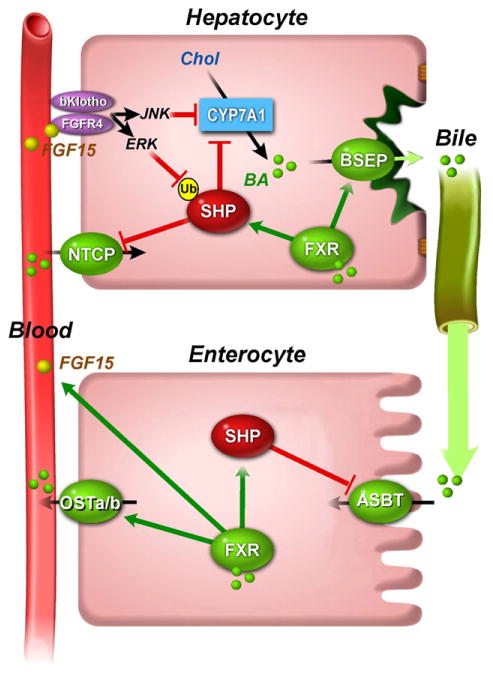Fig. 3.
Regulation of enterohepatic circulation of bile acids by FXR. FXR regulates the enterohepatic circulation of bile acids in the hepatocyte and enterocyte. After a meal, bile is released from the gallbladder into the duodenum. Bile acid re-uptake in the ileum is mediated by ASBT in the brush border membrane. In the enterocyte, FXR induces the expression of OSTα/β, which mediate bile acid transport from the enterocyte into the portal circulation to hepatocytes where they are taken up via NTCP. In the hepatocyte, FXR induces the expression of BSEP, which mediates bile acid excretion into bile. Negative feedback on the enterohepatic circulation of bile acid is mediated by SHP, which is induced by FXR and inhibits CYP7A1 and NTCP in the hepatocyte, and ASBT in the enterocyte. Alternatively, in the endocrine pathway, FXR in the enterocyte induces the expression and secretion of FGF15/19, which binds in the liver to the FGFR4/βKlotho receptor complex and in turn activates JNK and ERK signaling pathways. Activation of the JNK and ERK pathways results in repression of CYP7A1 and stabilization of SHP by inhibition of its proteasomal degradation, respectively.

